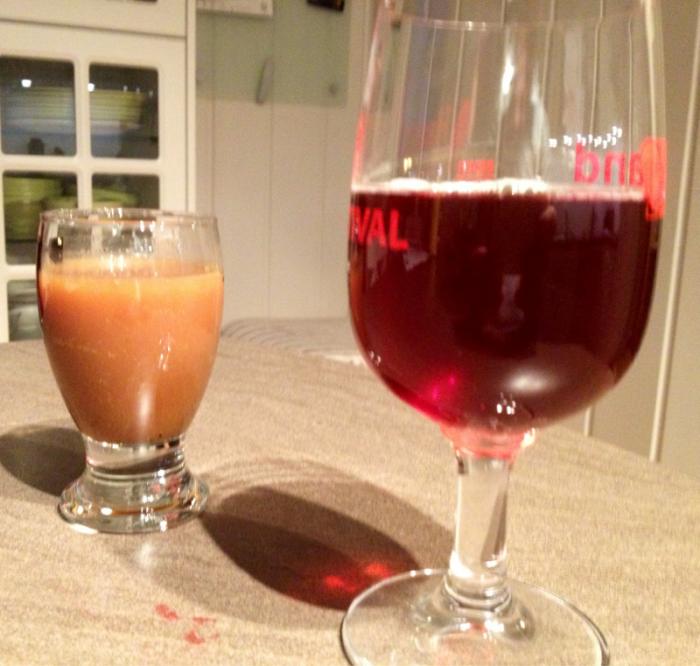Three weeks ago:
So... I decided to try to brew a mini-batch of what was supposed to be an oatmeal and buckwheat stout a it over two weeks ago.
I won't bore you with the details of Murphy's law in effect when it came to the brew day it self... Suffice it to say that my first experience with gluten free brewing was that it was extremely difficult and unpredictable.
I ended up with a demi john of 4.5 litres with what looked like badly prepared and thin porridge... OG: 1078
Seeing as my expectations were below zero and things could only get better, I added yeast and l and behold, fermentation started. After a couple of days I actually had a layer of something that resembled beer (but not stout) on top of the starch porridge that filled 4/5 of my DJ. Less than two pints were not what I was aiming for so I decided that I should try adding some amylase enzyme to the already fermenting brew along with some fresh yeast, nutrient and a bit of caramel for colour... I resumed as planned and shook the DJ vigourously. Two weeks later (with more shaking every other day) was down to 1/2 the DJ of porridge with roughly 2 litres of "beer" on top.
This is probably where I should have said "Fine, I'll try to bottle what I can, it probably won't taste very well either way..."
Needless to say; I didn't.
Instead I decided that if I just gave it one more dose of yeast and amylase, it would eat even more of the "porridge" and I could end up with more than 3 litres.
I did this two days ago, but now the starchy porridge doesn't seem to drop out in the same rate (there is still some fermentation going on) and I have at the moment maybe two inches of beer on top of the starchy porridge that fills the rest of my DJ.
Can you offer me some insight as to how this might end up (I'll leave for a few days more in room temperature with my fingers crossed before a final cold break in the shack [around 10 degrees C] and bottle what I have then)
Please feel free to tell me where I went wrong and what I could have done differently if I lose my mind and decide to try this on another time...
So... I decided to try to brew a mini-batch of what was supposed to be an oatmeal and buckwheat stout a it over two weeks ago.
I won't bore you with the details of Murphy's law in effect when it came to the brew day it self... Suffice it to say that my first experience with gluten free brewing was that it was extremely difficult and unpredictable.
I ended up with a demi john of 4.5 litres with what looked like badly prepared and thin porridge... OG: 1078
Seeing as my expectations were below zero and things could only get better, I added yeast and l and behold, fermentation started. After a couple of days I actually had a layer of something that resembled beer (but not stout) on top of the starch porridge that filled 4/5 of my DJ. Less than two pints were not what I was aiming for so I decided that I should try adding some amylase enzyme to the already fermenting brew along with some fresh yeast, nutrient and a bit of caramel for colour... I resumed as planned and shook the DJ vigourously. Two weeks later (with more shaking every other day) was down to 1/2 the DJ of porridge with roughly 2 litres of "beer" on top.
This is probably where I should have said "Fine, I'll try to bottle what I can, it probably won't taste very well either way..."
Needless to say; I didn't.
Instead I decided that if I just gave it one more dose of yeast and amylase, it would eat even more of the "porridge" and I could end up with more than 3 litres.
I did this two days ago, but now the starchy porridge doesn't seem to drop out in the same rate (there is still some fermentation going on) and I have at the moment maybe two inches of beer on top of the starchy porridge that fills the rest of my DJ.
Can you offer me some insight as to how this might end up (I'll leave for a few days more in room temperature with my fingers crossed before a final cold break in the shack [around 10 degrees C] and bottle what I have then)
Please feel free to tell me where I went wrong and what I could have done differently if I lose my mind and decide to try this on another time...




